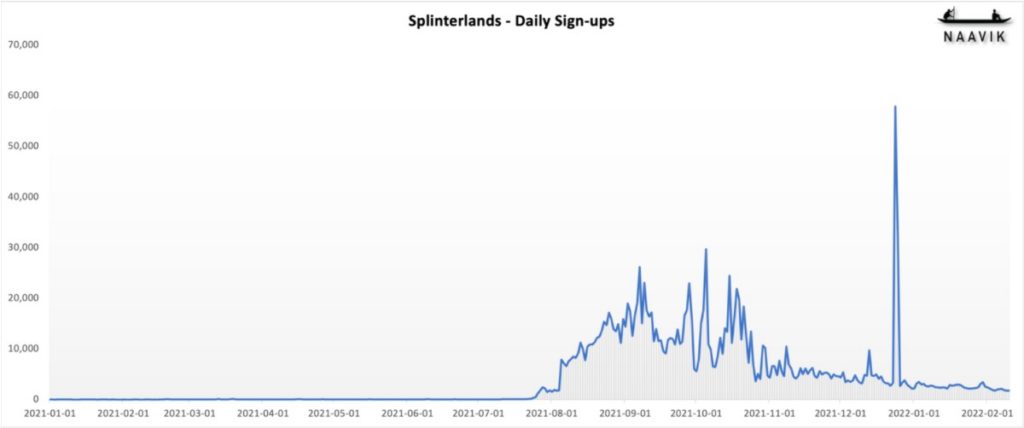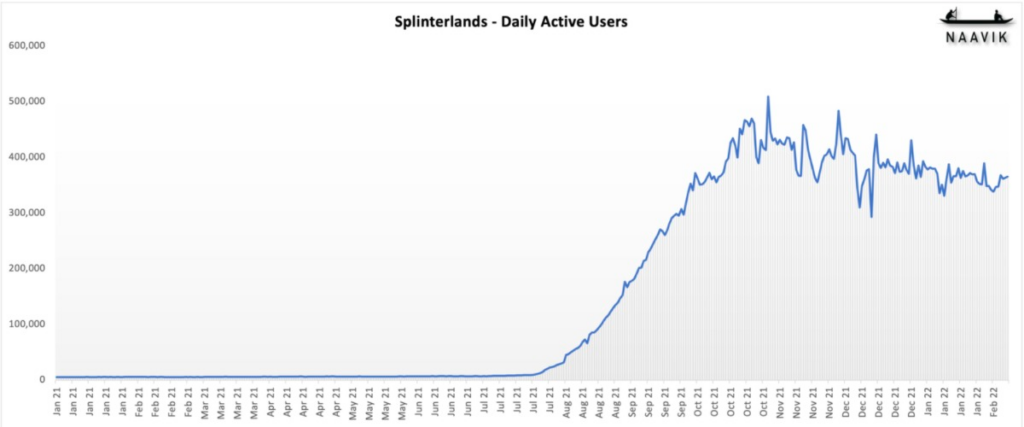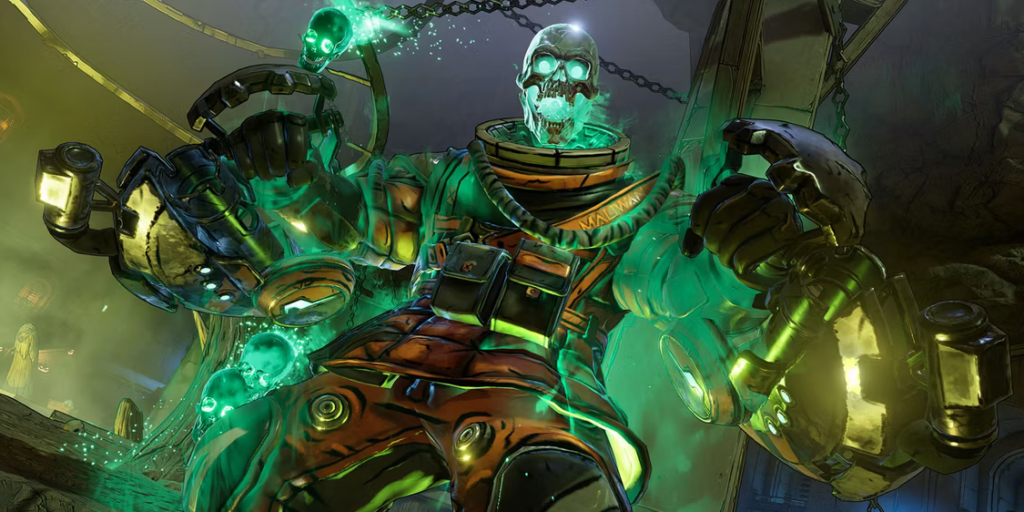
Source: Splinterlands
This research essay was originally posted on Naavik Pro - the #1 research portal for blockchain and F2P games! We serve both investors and developers with our premium research. Make us your remote games research department today!
Splinterlands is a blockchain-based trading card game in which players assemble opposing teams of creatures and then watch the battles resolve themselves automatically. Watch this video to see an example of deck-building and battling. Splinterlands is notable for being one of the older blockchain games with roots stretching back nearly 4 years to May 2018 when it was still called Steem Monsters; obviously, a lot has changed since then!
In terms of gameplay, as players win ranked battles, their ranking level improves and they become eligible to earn cryptocurrency and new cards as battle rewards. Progression through the ranks is gated not only by overall performance in battles against other ranked players but also by the overall “power level” of the players’ cards. As higher rewards are gated behind higher progression, players seeking to “play to earn” must acquire better and better cards through one means or another, which inevitably means putting money into the system. As evenly-matched ranked battles are a zero-sum game where one player advances in rank as another falls, the highest rewards are reserved for the elite.
In sharp contrast to games like Axie Infinity that require pricy NFT purchases to get started, Splinterlands is much more accessible. Not only can players play the game directly in a browser, but the initial cost to play is just $10, and players can pay with fiat as well as crypto. Furthermore, if progression gets blocked by not having good enough cards, players can rent cards for pennies a day rather than having to take on the personal relationship of a “scholar” loaning assets from a manager.
What’s interesting is that even though daily sign-ups have significantly decelerated from the peaks of last fall (as seen in the chart below)…

… daily active users have held fairly steady:

Obviously growth is better than stagnation; however, early data depicts a game that is fundamentally sustainable and not overly dependent on the pace of user acquisition, which is notable because many popular blockchain games are still the opposite. Not all players expect to walk away with a profit, and players are also (at least partially) sticking around out of enjoyment. Despite the game’s imperfections, it’s an early example of what play and earn could look like.
Of course, Splinterlands has seen its economy take a bit of a tumble in the wake of recent crypto volatility, but it is generally more resilient than Axie Infinity as its base game offers more variety, features cheaper and easier on-ramps, has a number of basic economic features aimed at absorbing short-term shocks, and frankly is just a better designed project overall. That said, it is somewhat cumbersome and over-complicated in parts, spreading various tokens and NFTs over as many as four different blockchains. It has a robust and lively community, but it’s difficult to evaluate how organic that community enthusiasm is given that it all originates from SplinterTalk and the HIVE blockchain, a “social blockchain” whose key feature is on-chain social networks that financially reward content creators with cryptocurrency in direct proportion to how popular their posts are.
The greatest criticism one could make of Splinterlands is that even though it is marketed as “play to earn,” at first blush it feels “pay-to-win” or “pay-to-play-to-earn”, with many levels of layered progress gates requiring progressively larger investments of both time and money to unlock. This is combined with a zero-sum ranking system in which one player going up in overall earning potential means another player losing it. That said, this doesn’t make the game all that different from any number of popular non-crypto mobile and F2P games that do much the same thing, and an innovative rental system reduces the barrier to entry. Another way to look at it is that the “pay-to-win” aspects provide a source of ongoing money that subsidizes “play-to-earn” players, keeping the game from unraveling the way the more pure “play-to-earn” games do.
In short, Splinterlands is a unique project with plenty to appreciate compared to other blockchain games but still has room to improve. In this essay we’ll dig deeper into the nuance here. How did the game get to where it is today? What makes the game design unique? How does money flow through the system, and how do the various tokens and incentives work across blockchains? Is Splinterlands’ in-game rental system a threat to yield-seeking guilds? What’s next for the game, and will it succeed at a greater scale?
This research essay was originally posted on Naavik Pro - the #1 research portal for blockchain and F2P games! We serve both investors and developers with our premium research. Make us your remote games research department today!








